

Phil Dart
August 2020
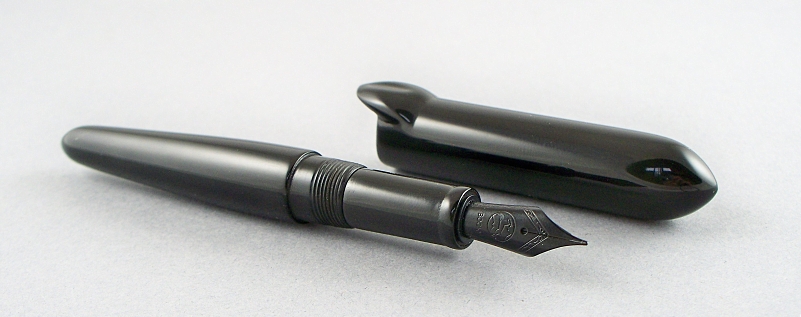
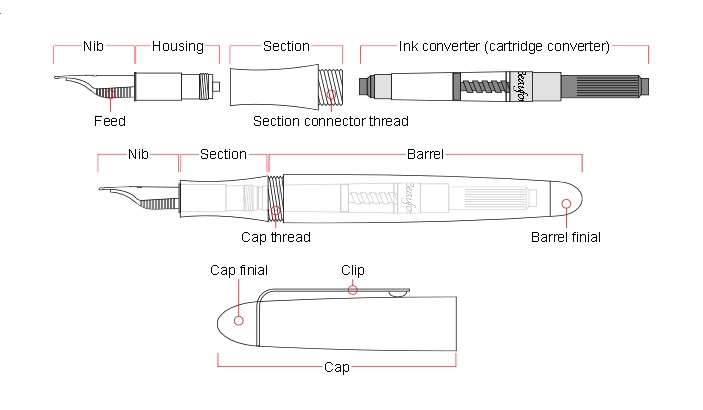
| Male & Female Threads | ||
|---|---|---|
|
Consider a nut & bolt. The nut has a female thread inside of it, and the bolt has a male thread outside of it. In other words, a male thread screws into a female thread (no giggling in the back row please) A Tap is used to cut a female thread and a Die is used to cut a male thread |
| Thread Majors, Minors & Pitches | ||
|---|---|---|
|
Instead of talking about outside and inside diameters of threads, they are referred to as major and minor diameters. The major is the outer extreme diameter, which on a male thread would be the crest. The minor is the inner extreme diameter - the trough between the crests if you like, sometimes also called the root, which on a female thread would be the hole through the middle. Imagine a nut and bolt in cross-section, and you’ll see that the major and minor are the same on both. The pitch is the linear distance between the crests of the thread. A metric thread with a major of 10mm and a pitch of 1mm would be described as M10x1 Subtracting the pitch from the major will give you the minor, so an M10x1 thread will have a minor of 9mm. It also tells you the drill size to aim for when using a tap, which will also be 9mm in this example. 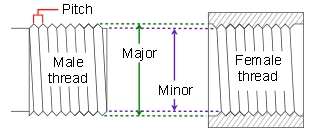 |
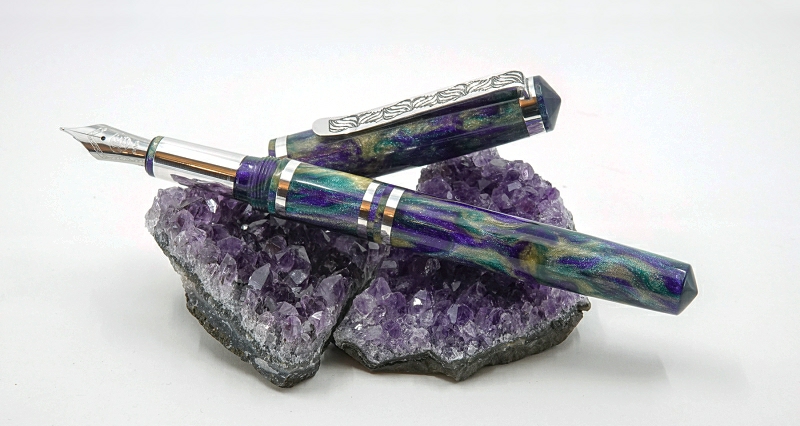
| Nib Sizes | ||
|---|---|---|
|
The nib size (size 5, size 6 and so on) refers to the physical size of the nib. The point width (fine, medium etc) refers to the writing width of the nib. There are three main nib sizes, which amongst fountain pen users, and for making a first custom fountain pen, the most popular are sizes 5 & 6. Sizes are so called because they fit around an ink feed which is 5mm or 6mm in diameter. A size 6 nib is physically larger than a size 5, both in it’s length and it’s width, and it’s housing is therefore larger too. You can read a more detailed explanation of nibs on the main Beaufort Ink website HERE |
| Top Tip #1 | ||
|---|---|---|
|
Take note of the dimension from the underside of the collar at the top of the Housing to the top of it’s thread. Make the corresponding dimension inside your Section marginally longer than that. If the Housing locates by running out of thread, it is likely to seize up. By making the dimension longer (0.5 to 1mm will do the job) the Housing will locate on it’s collar, which is what it’s supposed to do. |
| Ink Converter Fittings | ||
|---|---|---|
|
Unless a particular pen manufacturer uses a specific geometry for the mouth of their ink cartridges and ink converters (some do - Parker is a classic example) they generally all have a mouth that is known as a standard international fitting, which is pretty much universal. Beaufort Ink fountain pen cartridges and ink converters are all standard international, and Bock nibs are designed to take a standard international fitting, so the eventual owners of your custom pens will be able to get cartridges or a new converter anywhere. Beware though, that cheap Chinese versions are not as standard as you might hope, so if you use a cheap converter in your pen, it will probably just fall off. They fit well on cheap Chinese nib housings, but on very little else. |
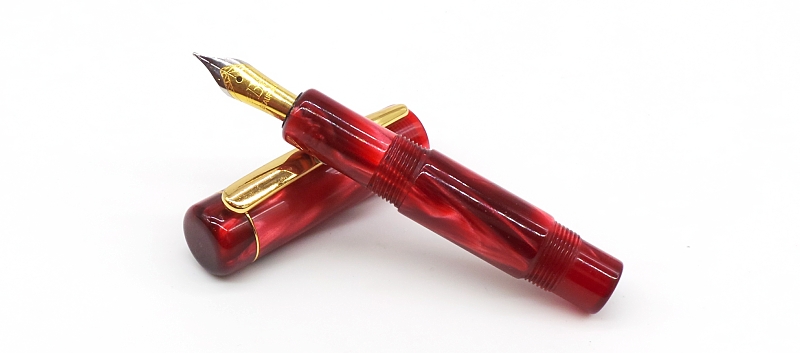
| Filling a Fountain Pen with Ink | ||
|---|---|---|
|
You can choose to use either ink cartridges or bottled ink in your pen. Cartridges are quick and easy, since you just unscrew the Section from the Barrel, remove the empty cartridge and fit a new one. A Cartridge has a seal across its mouth, which is broken by the intake nipple of the nib housing when the cartridge is pushed on. Cartridges are ideal for the occasional pen user or for a quick fill with no hassle or fuss. Most fountain pen users though prefer to use bottled ink, firstly because millilitre for millilitre it’s much cheaper than cartridges, and secondly because it’s available in a vastly bigger range of colours than in cartridge form. One of the joys of using a fountain pen is that you can write in any colour you fancy, and a great many pen owners like to take full advantage of that. Filling a pen from a bottle involves an ink converter, which has a piston inside it that in most cases is operated by a twist mechanism. Unscrew the Section from the Barrel to withdraw the converter from the pen, but leave the converter attached to the nib housing (which is obviously still inside the Section). Twist the mechanism so that the piston is extended down to the nib end. Dip the entire nib into the bottled ink and reverse the piston to suck up the ink into the converter through the nib - you’ll need to clean up the nib afterwards a wee bit with some tissue or blotting paper. Refit the section to the Barrel, and you’re good to go. Leaving the converter attached has two advantages - firstly, you are not wearing out the mouth of the converter by constantly removing and refitting it, and secondly, you are excluding air from the ink system by sucking ink in through the nib. |
| Top Tip #2 | ||
|---|---|---|
|
In order to cut a male thread with a die, the major of the thread is theoretically also how big you need to make your tenon. However, if you make your tenon smaller by a tiny amount, you’ll find it much easier to start the cut, you’re less likely to tear the material as you cut it, and you’ll get a nice “sliding fit” when screwed on to the corresponding female thread. 0.05mm to 0.1mm is enough to make a difference. NASA might possibly disagree from a precision point of view, but you’re not making space rockets from high tech alloys, you’re making pens - from acrylic. |
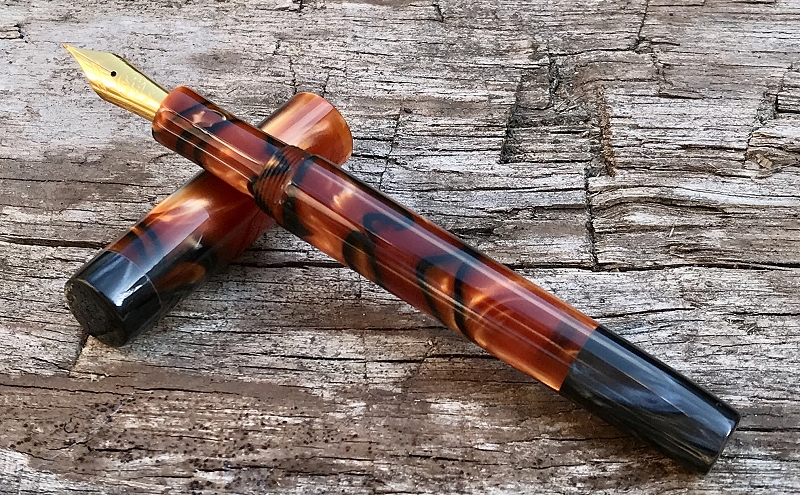
| Types of Thread Tap | ||
|---|---|---|
|
There are three main types of tap. The underlying tool is the same thing in each case, but some of the cutters are ground away in certain ways to enable them to perform different functions. Confusingly though, they’re known by different names in different countries. 1. UK = Starter Tap (US = Taper Tap)  2. UK = Intermediate Tap (US = Plug Tap)  3. UK = Plug Tap (US = Bottoming Tap)  A Plug Tap is primarily for tapping into a blind hole - a hole previously begun with one of the taps above, where the exit is narrower than the entrance or where there’s no exit at all. All of its cutters are intact and it has a flat end, therefore the tap goes right up to the end of the hole at the full diameter of the thread. It isn’t suitable for beginning a cut, but it is useful for continuing a cut in translucent or transparent material, where you’ll see the thread from the outside. In such cases, it’s desirable to have a clean finish to the thread rather than appear to just peter out, which is the effect you’d see with either of the other two types above. |
| Understanding Thread Dies | ||
|---|---|---|
|
The two common styles of die are solid and split dies. Solid ones are much cheaper but they have limited uses. They’re difficult to get started, and are much better at chasing an existing thread than they are at cutting a new one. A split die, by contrast, can be used to perform all of the male thread equivalent functions of the three taps above. Spilt dies are sliced from the centre to the outside edge, and are then tensioned with a small screw, either on the die holder or on the die itself, which allows you to alter the diameter of the cutters. Tighten it to expand the cutters, and with the lettering on the die facing the workpiece, you have a Starter die - the first cutters on the lettered side are chamfered. Slacken the screw to restore the cutters to their true diameter, and with the lettering facing the workpiece, you have an intermediate die. Reverse the die so the lettering faces away from the workpiece. The cutters aren’t chamfered on this side so you can now cut at the full diameter of the thread right up to the shoulder of a tenon, just as a Plug tap gets to the end of a blind hole. 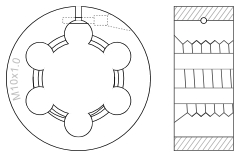 |
| Single Lead versus Triple lead Threads | ||
|---|---|---|
|
Try to screw a normal, everyday nut and bolt together, and you can only start to do so when the lead (or start) of the nut thread engages with the lead of the bolt thread. There is only 1 lead on each, which is known as a single lead thread - you can only connect the nut and bolt in one position. A triple lead thread has 3 leads on both the male and the female, therefore you can connect them together in any one of 3 positions, which are equally spaced around the circumference. The burden of finding a starting point (if it is a burden) is obviously reduced by a factor of 3, but that’s not the main point. The major advantage of a triple lead thread is that it will screw on the same linear distance as a single lead thread with 3 times fewer turns, whilst the rules of thumb regarding majors, minors and pitches remain unaffected. |
| Top Tip #3 | ||
|---|---|---|
|
The cutters on taps and dies are not continuous - there are several sections separated by grooves, (or circles in the case of a die), that are called flutes. Their job is to provide clearance for the swarf - the material being removed by the cutters, so it can be kept clear of the cutters and be pushed to the top of the hole, or the end of the tenon in the case of a die. The swarf needs to be detached from the hole or tenon though, otherwise the tool will clog up, so the standard technique when cutting any thread, be it male or female, is to make a couple of half turns forward with the tool, then make a half turn in reverse. That will detach the swarf and also help to break it up a bit. Two more half turns forward, then a half turn in reverse, and so on, repeatedly, all the way to the end of the cut. |
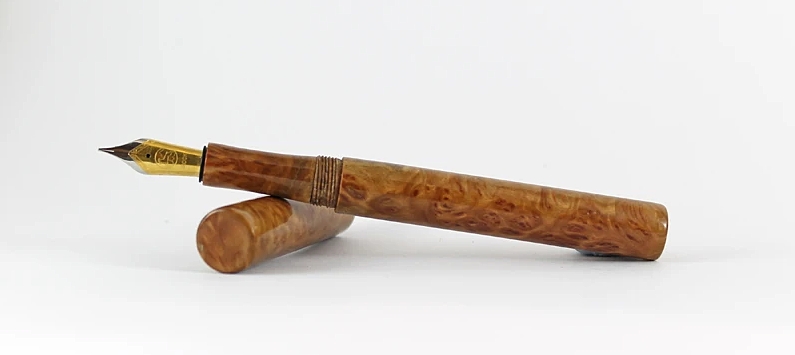
| Top Tip #4 | ||
|---|---|---|
|
A thread that locates (or comes to a stop) by butting up to the shoulder on the tenon of another, is prone to seizing up if the thread on both parts runs right up to the shoulder. You can overcome this by cutting a fillet at the back end of the thread on the male, after you’ve finished forming the thread itself. Use a thin parting tool to remove the threads over a distance of 1mm to 2mm or so, down to the diameter of the minor, or slightly slimmer in fact, and that will stop the problem from happening. If you also cut a fillet at the front end, it will save you from having to cut one inside the female, should there be a shoulder in there that’s likely to cause a problem. Fillets at both ends also serve to produce a nice, neat, professional appearance to the thread. 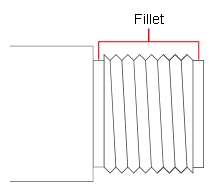 |
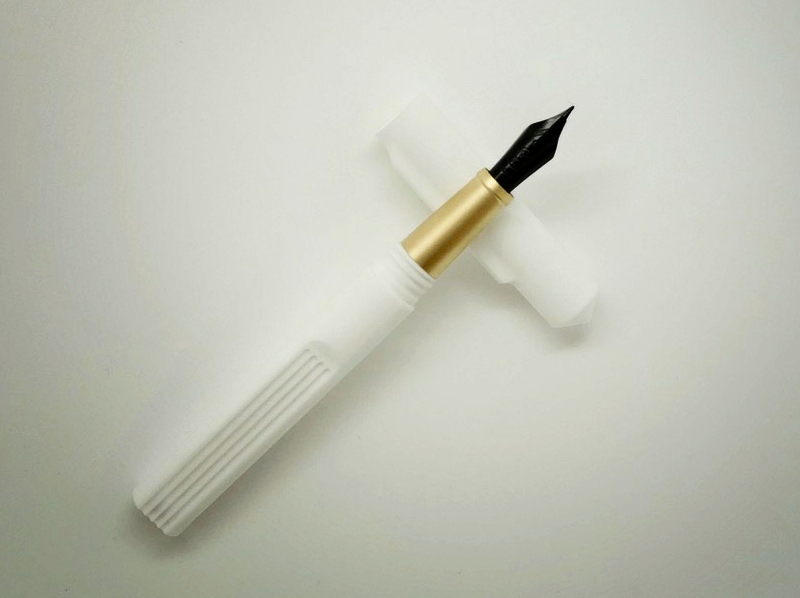

| The Proverbial Postable Cap | ||
|---|---|---|
|
If the cap can be fitted to the finial end of the barrel whilst the pen is in use, the cap is said to be postable - the cap can be posted on the barrel. If it can’t and has to stay on the desk, it’s non-postable. So which is better? Hmmm - good question. First of all, you’ll need to work out how to post the cap if that’s the route you’re going down. It can either be a push fit if you get your geometry right, or you could put a male thread on the end of the barrel or barrel finial, onto which the cap can be screwed. Try to avoid an unnecessary, long stalk behind any thread on a finial though, which is the lazy, frankly dated approach that many pen kits take, It’s a custom pen, so you don’t have to do it that way, and presumably you don’t want it to look like a Junior Gent. If it’s going to be a simple push fit instead of a thread, which is arguably the neatest looking way of doing it, make sure that by posting the cap, neither the cap thread or the barrel are going to get damaged. I’m afraid you’re always going to find someone who won’t buy your pen if it isn’t postable. Don’t be too upset by it though - you can always get back in the workshop tomorrow and make sure the next one is postable, which surely will overcome the problem. Unfortunately though, it won’t, because now you’re going to find someone who won’t buy your pen precisely because it is postable, particularly if it does so via a thread. It’s a dilemma you’re never going to overcome I’m afraid, unless you make both types. It’s far easier to make a pen with a non-postable cap, which, it has to be said, is the way most people go at first. You’re not going to sell a pen to every potential customer in any case, so my advice, certainly to start with, is to make your choice, just go with it and don’t worry. |
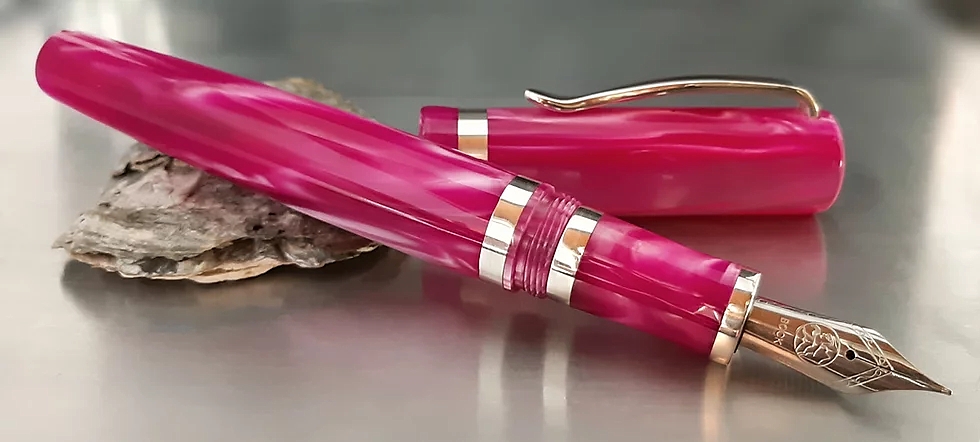




Your name *